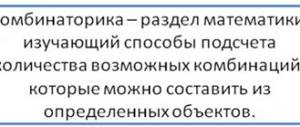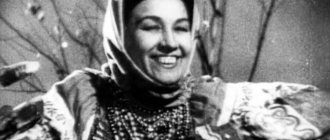Folk songs are those tales whose music and words appeared during the development of a particular culture. In most cases, these songs do not have an author, as they were composed by the people. It is impossible to list all existing genres of folk songs. But you can learn about the most basic ones from this article.
At school, children are taught the basics of folklore in music and literature lessons. The 4th grade will learn about what genres of folk songs there are. Teachers conduct general education lessons, at each of which children become familiar with a certain type of folk art. Particular emphasis is placed on genres of folk songs, examples of which students try to find in reality.
About the homeland
Probably the very first songs that appeared on Earth were songs about the homeland. They head the “folk song genres” section. Examples of such creativity can be found in the culture of the peoples of France, Germany, England and Scotland.
Songs about the homeland, in turn, are divided into:
- ballads;
- epics;
- historical songs;
- fables.
The first type of folk songs has a certain gloomy character. Their content was clear, clear and consistent. The appearance of the very first ballads is attributed to the Middle Ages, but in Russia this genre appeared only in the 19th century.
The most famous examples of this type of songs are: “Gromval”, “Lyudmila”, “Sun and Moon”, “Airship”, “Song of the Prophetic Oleg”.
Bylinas also appeared in the Middle Ages and mean “a story according to facts.” A striking example is “The Tale of Igor’s Campaign.” The basis of such songs were stories about everyday objects and some historical facts.
The content of historical songs included all sorts of historical events that happened to the people. But this type of creativity ended its existence in the 19th century, as it was supplanted by new emerging folk forms of folklore. These songs reflected events starting from the second half of the 14th century. (“The Capture of Kazan”, “The Mistake of the Cossacks”, “Poltava”) and until the end of the Second World War.
Fables were a certain type of song that combined all the previous ones, only they were written in a comic form and had no real relation to history.
Workers
Workers or labor songs were created a very, very long time ago to make the work of workers easier. In the same spirit, people composed some other genres of folk songs. Labor chants were performed with a certain rhythm and intonation, which encouraged people to actively work. Most often they contained certain shouts and repetitions. There were always jokes in the song, which encouraged people.
The most striking and memorable example of this genre is “Oh, let’s go!” The rhythm of the song itself is made in such a way that it is associated with the uniformity of movements during work.
About love
The type of love songs is included in a special section “folk song genres”. The lyrical motifs of this type of creativity are most often performed by women, only in the rarest cases is it performed by a male choir. Main types of love songs:
— wedding;
- lamentations;
- pestles.
Wedding songs were the basis of every family, because everyone knew them. Such a great holiday was accompanied by various songs, both sad, about the daughter’s separation from her parents’ home, and cheerful ones, which prophesied a happy life for the young. We started singing love songs at the bachelorette party.
The lamentation genre are songs that carried tragic content and were accompanied by a sad melody. This type of folk art combined not only songs about unrequited love or love at a distance, but they could also be song-stories about some deplorable event.
Pestushki can be attributed to both the genre of love songs and the genre of lullabies, since mothers began to sing them to their children in the cradle. These songs praised the child, wishing him health and happiness in his life.
Genres of musical folklore: what is it and what are they?
Genres of musical folklore are the main types of musical works created by unknown authors and preserved by the people for many generations through oral transmission from one person to another.
We will talk about these types today, but first we will bring some clarity regarding the concepts of “folklore” and “genre” so that no one gets confused.
What is folklore and what is a genre?
In general, the word “folklore” refers not only to the field of musical creativity. This word is English, and is translated as “folk wisdom”. We classify many phenomena of spiritual culture as folklore. These include legends, traditions and fairy tales, sayings and proverbs, spells and incantations, omens and fortune telling, dances, religious and holiday rituals, various games and even counting rhymes, rhymes and jokes!
Genres are historically established types of works with their inherent characteristics of content and form, as well as a specific life purpose and features of their existence and performance. Examples of musical genres are opera, ballet, symphony, song, romance, and so on.
What are the genres of musical folklore?
There are an extremely large number of different folk music genres among different peoples (all over the world), so in the most general sense they can be divided into vocal (those that are sung - mainly songs), instrumental (those that are played - mainly tunes) and vocal-instrumental ( It’s clear that they sing and play here at the same time).
Many more musical genres can be divided into three universal content categories. These are epic (if a story is told), lyric (if the main emphasis is on feelings) and drama (if some action is performed).
Genres of Russian folk songs
To name all the genres of musical folklore means to embrace the immensity. Each new type of song or dance is a separate genre. For example, epic, round dance, trepak, lullaby, spring song, carol, and ditty - all these are names of genres.
We will dwell in more detail on the genres of Russian folk music. The main genre here is the song, but songs are different and therefore there are numerous genre varieties of Russian song. It is best to remember these varieties by the role they played in the life of the people, in what setting and under what circumstances they could be heard.
And the circumstances may be, for example, the following - some songs are sung once a year (on the day of some holiday), other songs are tied to some ritual and are performed only when this ritual is performed (for example, on a birthday, on wedding day or funeral). There are songs that are sung only in winter or summer, but there are also those that can be sung all year round on any day of the week and in any weather. These songs are not tied to time or rituals and are sung when there is simply a mood to sing them - for example, a song about sadness, when sad, or a song about unrequited love, when there is such, or a fairy tale song told by a guslar when he a lot of people are listening.
So, Russian songs are like this:
- Songs that are associated with the calendar and calendar holidays and rituals (invocation and welcoming of spring, “larks”, early spring and summer Trinity round dances, songs of the harvest season and haymaking, congratulations on the New Year, carols and fortune-telling songs, Olivet songs).
- Songs that are associated with various events in the personal and family life of people (songs for the birth of a child, baptismal songs, lullabies, children's play dances, majestic, wedding and recruitment songs, funeral laments and laments, memorial prayers and spiritual poems).
- Epic song genres (epics, tales, buffoons and fables, some spiritual poems, ballads, historical songs).
- Lyrical songs (songs about love – happy and unrequited, tragic, lingering songs, “suffering”, city songs and cants).
- Songs of everyday life and holidays (soldiers' and student's songs, nautical navigation songs, labor - barge workers, artel, peasant songs, holiday - vivat, farce, comic songs and ditties).
Thus, turning to the content of the songs and their purpose in life, we can conditionally distribute the genres of musical folklore into such groups.
For a lively musical example from ancient Russian folk music, listen to the cant “A storm dissolves the sea” about the harsh lot of sailors, performed by a well-coordinated male choir.
Ancient Russian cant “Bore dissolves the sea”
Round dances and dances
Round dance and dance creativity are the most fun and favorite genres of Russian folk song. Examples of this type have been preserved in a very large number: “Millet”, “There is a chapan on Ivanushka”, “No thanks to you, Abbess”, “At the gate, the priest’s gate”, “Katenka is cheerful”.
Round dance and dance songs consist of an invitation to dance (round dance), the action itself and its final part.
These genres of folk songs carried a satirical content that was associated with dance and poetry. For some time, this type of creativity was a kind of magical ceremonial ritual. But over the years, these songs lost their relevance and became just a way of entertaining people during the holidays. Most often, round dances were held in the spring, since it was believed that this way one could summon warmth; people had fun much less often in the summer, since there was already enough work. But winter gatherings ended with very fast dances and songs.
Calendar and ritual songs
Calendar-ritual folklore is one of the most ancient genres. And this is due to the fact that people’s lives have always been connected with nature, so it had to be appeased. This is how many fertility festivals appeared. At these festivals, rituals were performed, accompanied by dances and songs. The main idea of such rituals is to improve the well-being of the peasants.
Genres of Russian musical folklore also include songs performed during fortune telling. Most often, fortunes were told on Christmastide, which began on December 25 and ended on January 6. The songs sounded these days were called sub-blind and were performed by lot. Their text was believed to predict the future in metaphorical form. Here is a fragment of one of these songs:
“As a man walks from Novgorod,
That guy's beard is shaved;
He is neither a rogue nor a thief, he has an ax behind him;
And whoever he comes to will rip off his head.
Whoever gets it, it will come true;
And to whom it will come true, it won’t take a minute. Glory!"
What other genres of musical folklore are there that belong to this type? Calendar-ritual songs also include songs played at weddings, funerals, christenings, and during childbirth. Here you can also name recruiting songs that were performed when men were escorted to war.
The most interesting are the wedding rituals and the songs associated with them. They are divided into three stages, which can last from several weeks to months. The wedding ceremony begins with matchmaking (the matchmakers come to the bride's parents and ask for her hand in marriage), then a conspiracy occurs (the final agreement between the parents of the young couple for the ceremony) and everything ends with the wedding itself. All these stages were accompanied by songs reflecting this or that event and explaining the action of the rituals.
About nature
The nature of Russia is very rich and diverse, and accordingly, there are simply no songs about it. Farmers and plowmen came up with these songs in their free time, because they wanted to take a break from work, and they were always among living nature.
Many genres of folk songs, calendar-ritual, labor, soldiers, attribute this type of song to a subsection of their main one. But this is not a correct judgment at all. There are a lot of songs about nature; they draw a parallel between nature itself and the existence of man, as well as the created world around him. There is no place for work or military showdowns, or any celebrations. They were created only with the purpose of telling about all the beauty around working people.
Therefore, songs about nature are an independent phenomenon and cannot be part of any of the “genres of Russian folk songs” sections. There are simply too many examples of songs about nature: “White, fluffy snowballs”, “Listen, lark”, “The sun is descending over the steppes”, “Spring. Big Water", "Evening Bells".
Presentation “Russian folk song”
Slide 1
Russian folk song Presentation by Anastasia Ilyukhina, grade 9a, AOU school No. 9, Dolgoprudny
Slide 2
A folk song is a song whose words and music have developed historically. A folk song does not have a specific author, or the author is unknown. The origins of Russian folk song go back to hoary antiquity. Already at the beginning of the first millennium AD, Greek, Roman and Arab historians wrote with delight about Slavic songs, and the Slavs themselves were called “song lovers”. What is “Russian folk song”?
Slide 3
The whole life of a Russian person from birth to death was accompanied by song. Song in folk life N.A. Dobrolyubov wrote: “Even in the cradle, children were lulled to sleep by songs, growing up, they themselves learned to sing...
Slide 4
They worked singing in the field and in the forge. Our ancestors were farmers, so many rituals and accompanying songs are associated with rural work Songs in folk life
Slide 5
In the winter, on long evenings, women would shop where the house was more spacious, do some leisurely, monotonous work (spinning, sewing, embroidery) and always sing songs. Song in folk life
Slide 6
Song in folk life We rested with song
Slide 7
Song in folk life A young man was getting ready to get married, his matchmaking, bachelorette party, wedding - all this was certainly announced with songs. Children were lulled to sleep with songs. And when a person died, he was seen off with farewell, sad funeral songs.
Slide 8
With a song they drove off to work, to war, with a song they went to hard labor, with a song the barge haulers pulled the towline. Song in folk life
Slide 9
And all important events - church holidays, calendar dates associated with work and family matters, were also lived with songs. Song in folk life
Slide 10
And of course, the eternal wanderers—prisoners, passers-by, bandits—could not do without songs. Songs "daring"
Slide 11
Russian songs were usually sung in chorus. And often they not only sang, but also danced - they performed round dances, a spectacle of exceptional beauty and harmony... They were held, as a rule, in open large meadows, in elevated places, so that the whole village could admire this colorful action. Russian song - a collective work
Slide 12
Song epic - epics, ballads, fables and buffoons; Ritual - calendar (Yuletide, Shrovetide, according to the time of year) and family (for birth, death, wedding, lullabies); Lyrical and labor songs; “Otkhodnicheskie” - hauliers, coachmen, soldiers, workers; “Deleted” - bandit songs, hard labor and exile songs, prison songs; Comic – round dances, ditties, “suffering”; Cossack military songs; Genre songs – round dances, games. Many types of Russian folk songs
Slide 13
Folk songs of the 19th-20th centuries are original works. They have their own aesthetics, their own canons. Their action usually takes place in the city. But the themes remained the same - love, betrayal, separation. It’s hard to imagine how many generations of Russian people reflected their feelings, experiences, and dreams in the song. Having gone a long way, the song has absorbed a centuries-old feeling that has been preserved in the experience of the people. Folk song is the soul of a nation. It contains our history and our age-old traditions. Folk song - the soul of the people
Slide 14
Presentation prepared by Ilyukhina Anastasia Materials used in preparation: https:// pedsovet.su https:// www.photomagic.best-host.ru / cd_oform.html https://www.audiopoisk.com
Ritual
Calendar-ritual songs accompanied the Russian people for a very long time, as they were performed at all times of the year and regardless of holidays or weather. This type of folklore has existed for more than two thousand years. There are many subspecies of this genre:
- winter songs (carols);
— spring (stoneflies);
— summer (songs for Ivan Kupala);
- songs of plowing and sowing, harvesting;
— Ascension songs;
- Maslenitsa.
This list can be continued for a long time, because these are the most common genres of Russian folk song. Examples of ritual songs have survived to this day; they are taught in music lessons in the 4th grade. These are “Koleda-Moleda”, “The girls sowed flax”, “Wreathing wreaths”.
Music lesson in 4th grade “The Theme of the Fatherland in folk and composer’s music.”
Music lesson in 4th grade.
Quarter theme:
"Music of my people."
Lesson topic:
"The Theme of the Fatherland in Folk and Composer's Music."
Lesson type
: expansion and deepening of the topic.
Lesson genre
: travel lesson.
The purpose of the lesson:
understanding and mastering the Russian heroic-patriotic opera “Ivan Susanin”.
Lesson objectives:
Educational. Cultivating a listening and performing culture, the ability to perceive the figurative content of music and embody it in various types of musical and creative activities.
Developmental. Development of students' creative abilities, imaginative and associative thinking, fantasy, musical memory, emotional and aesthetic perception of reality, music and life.
Educational. To bring to the consciousness of students that with the help of various means of musical expression it is possible to convey both the mental state of a person who is ready to accept death in the name of saving the homeland (Susanina’s Aria) and the joy of victory.
Musical material:
M.I.Glinka. Recitative and Aria by Susanina; scene of death: chorus "Hail".
Lesson content.
-In today's lesson you will continue your acquaintance with the music of M. Glinka. Name a work with which you are familiar. (Opera “Ivan Susanin”).
On March 20, 1613, while saving Tsar Mikhail Romanov, Kostroma peasant Ivan Susanin died.
1612 The Poles who have captured Moscow are looking for the future Tsar Romanov in the Kostroma forests. Susanin leads his enemies into an impenetrable thicket, where he destroys them, but he himself heroically dies for the king. The opera was written in 1836. The premiere took place on December 9, 1836 in St. Petersburg. The genre of the opera is folk musical drama. The opera consists of 4 acts with an epilogue. After the premiere of the opera, the touched Emperor Nikolai Pavlovich invited Glinka to his box, expressed gratitude for the composition and suggested renaming the opera “A Life for the Tsar.” From the first bars, the opera captivated listeners not only with the novelty of Russian folk intonation, but also with a powerful charge of spiritual patriotism that permeated every bar of the amazing composition. In Act 3,
the first clashes between Susanin and his enemies will take place.
Susanin, his daughter Antonida and adopted son Vanya, finishing preparations for receiving guests, are quietly talking. They are preparing for the wedding of Antonida and Sobinin. Suddenly the Poles burst into the house. The music of this scene, which sounded calm and joyful, but with a premonition of the pain of separation, suddenly becomes militant. Differences in intonation between Polish polonaise and Russian drawn-out melodies. The Poles, threatening Susanin with death, demanded to be taken to Minin’s camp in Moscow. At first Susanin refuses. But then a bold, daring plan matures - to lead his enemies into the wilderness and destroy them. Act 4
“Scene in the forest
”. Exercise. – Listen to Susanin’s recitative and aria. Pay attention to how it begins and how it develops. Does the mood of the music change? What is this connected with? (“In the aria, Susanin pours out his heavy thoughts. He goes to great deeds without fear, but cannot overcome the sorrows of his heart: the last hour has come.”)
Ditties
Russian culture is characterized by various funny motifs and a wide variety of genres of folk songs. 4th grade, for example, is required to learn ditties and does it with great pleasure, since these are very light quatrains that have musical accompaniment. In ancient times, these songs were composed by rural youth and performed at various celebrations accompanied by a balalaika or accordion. Over time, ditties acquired a more everyday character and are reflected even in today's culture.
There is an opinion that the first ditties appeared in the 17th century. But they were more like satirical poems rather than songs.
Chastushkas also include other genres of folk songs:
- lyrical (with a wide variety of content);
- suffering (about love);
— matanya (appeal to one’s beloved);
- dance songs (the most common satirical version of ditties).
Lullabies
The most lyrical genre of folk song is considered to be a lullaby. Since ancient times, it has been the custom that they are performed either by mothers or nannies for children to lull them to sleep. All previous genres of folk songs require musical accompaniment. Lullabies are performed acapella.
This genre of song is a kind of amulet for a child from evil forces. It was believed that in a dream one could see scary creatures, ghosts or simply unpleasant events, but when the child opened his eyes, all this disappeared. That is why in some lullabies you can hear scary words, for example, “a little gray wolf will come and bite you on the side.”
Soldier's
Soldiers' songs are part of a larger genre - otkhodnichesk songs. These also include burlatsky, Chumatsky, workers (if this work is far from home) and coachman.
The first soldiers' songs appeared together with the Cossacks in the 17th century. Since this phenomenon was new (new living conditions and traditions), the songs were able to fully reflect the events of those years. The main themes of such songs: military-historical events that describe everything that happens in colors, the creation of images of heroes. Soldiers' folklore spoke truthfully and harshly about military operations, but this did not mean that soldiers and Cossacks did not come up with humorous songs.
These genres of folk songs with examples have survived to this day in very large quantities. These are “Lights lit up across the Liaohe River”, “The Turks and the Swedes know us”, “The Battle of Poltava”, “Hurray for the Tsar - the Father of Russia”, “Black horses are rushing”.
Conclusion
Thus, the genres of musical folklore, the list of which we tried to compile, are inextricably linked with the life of the people. Any change in the life of ordinary people or the entire country was immediately reflected in song creativity. Therefore, it is impossible to list all the genres of folklore created throughout the existence of mankind. Moreover, today folk art continues its development, evolves, adapts to new conditions and lives. And it will live as long as humanity exists.






